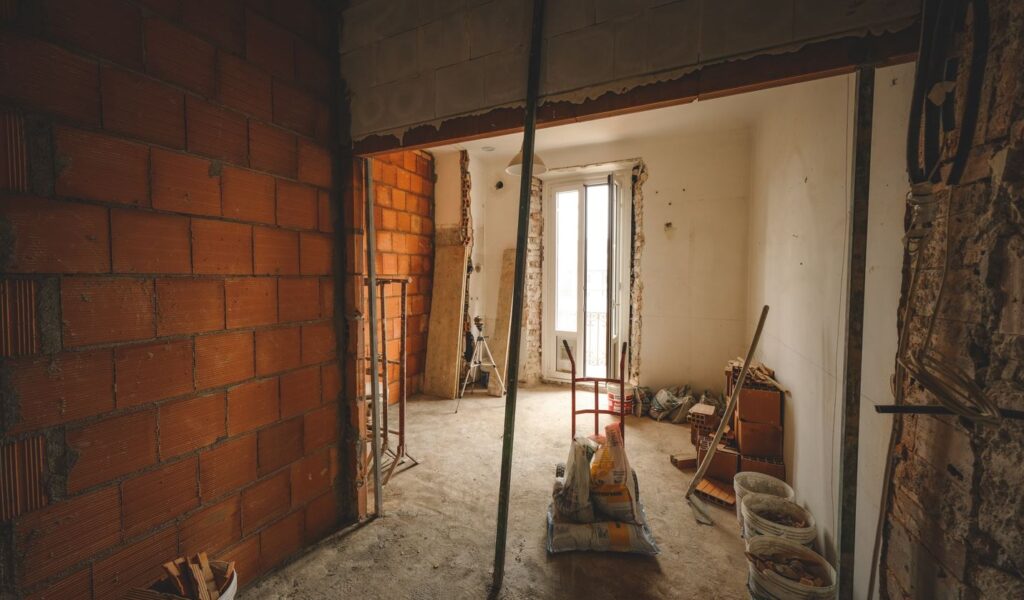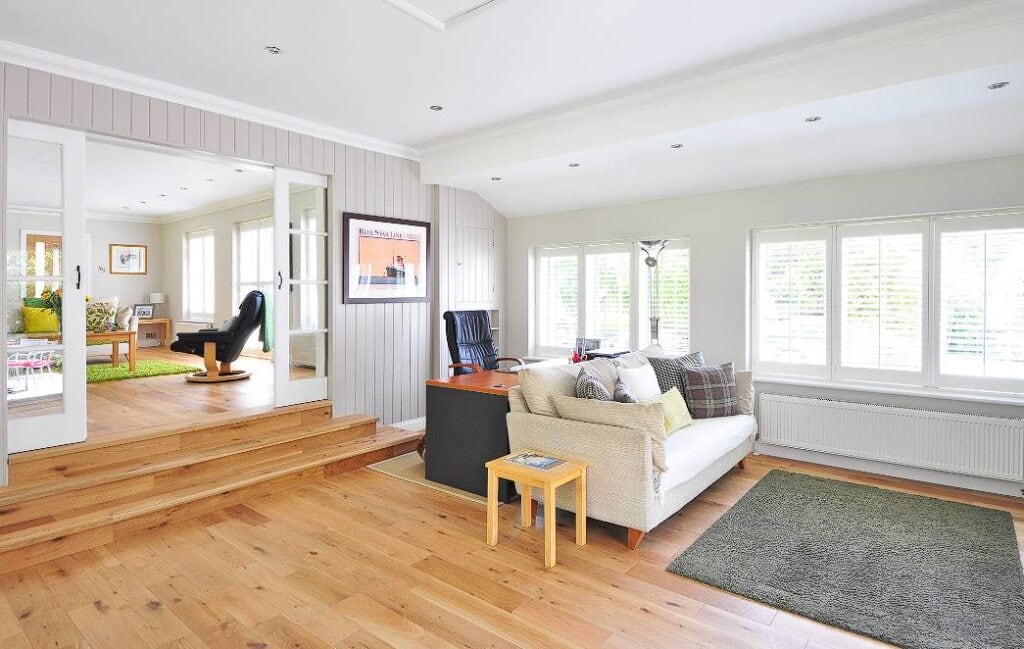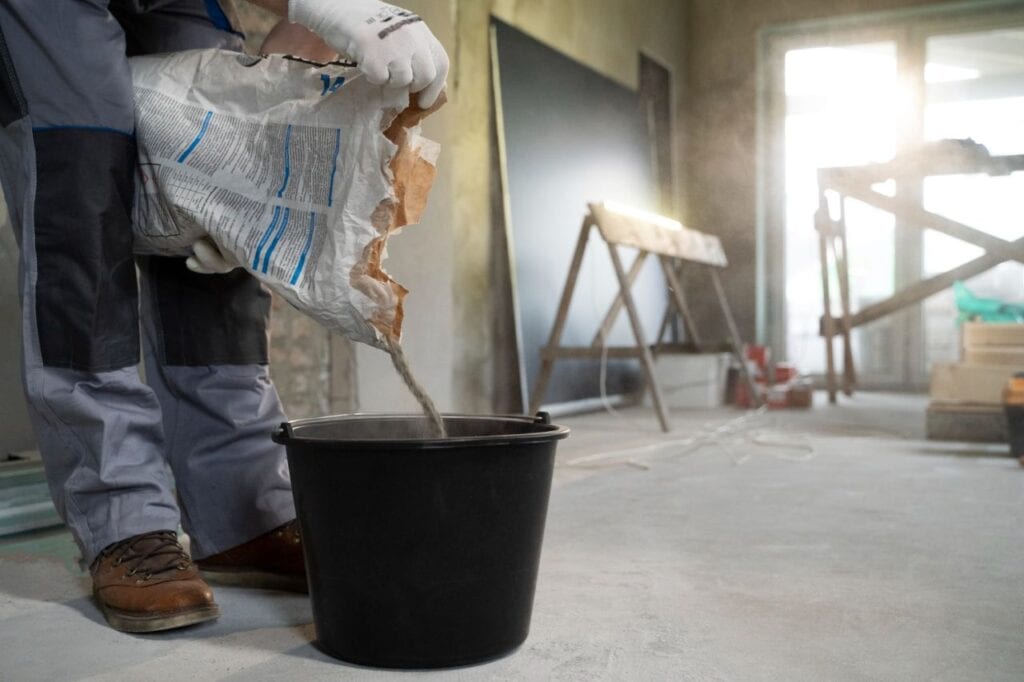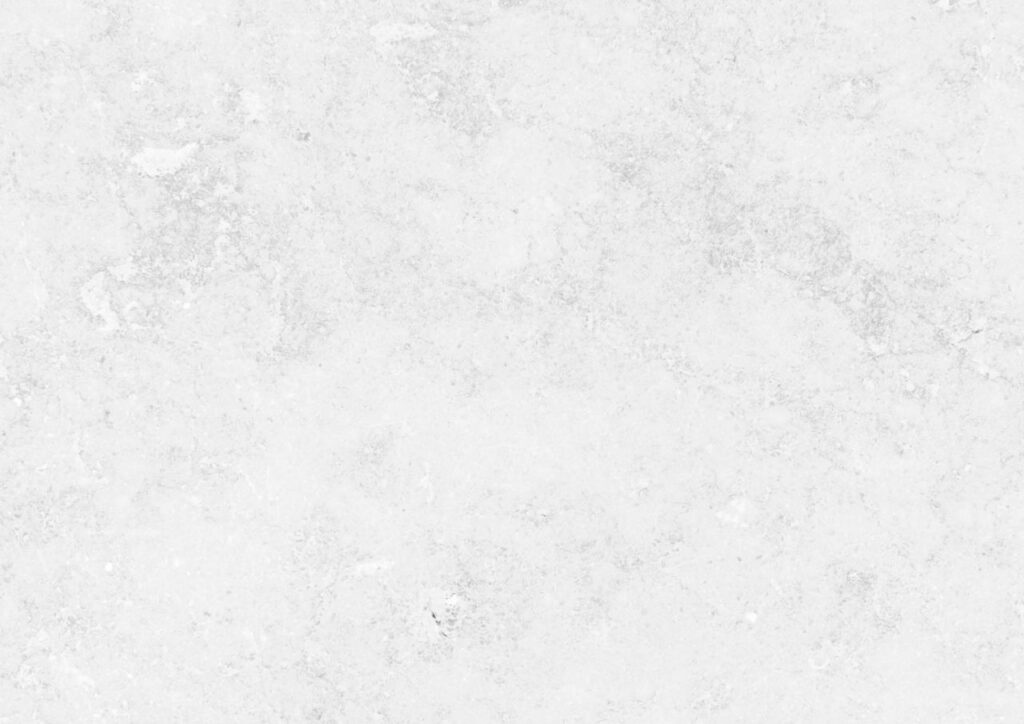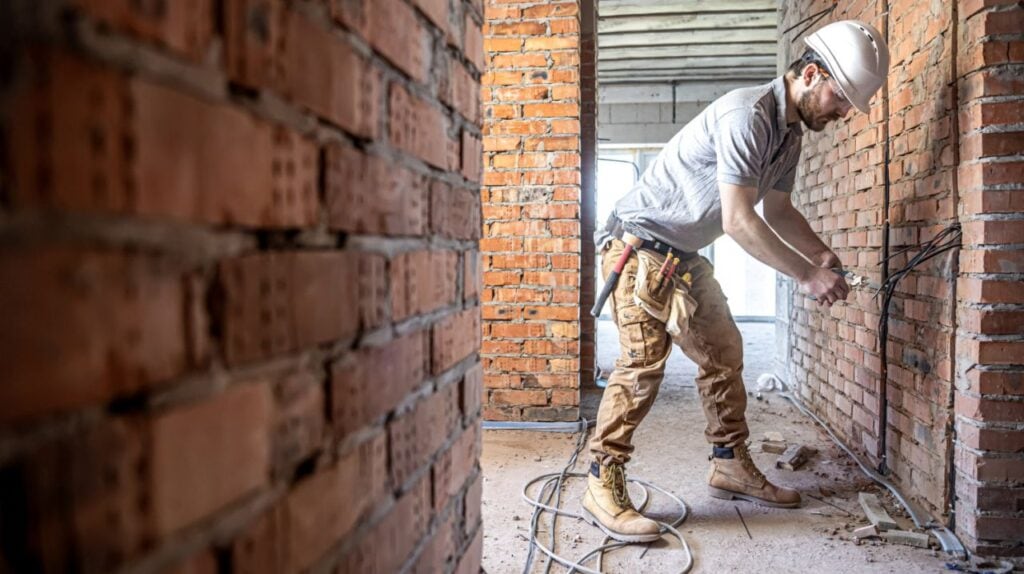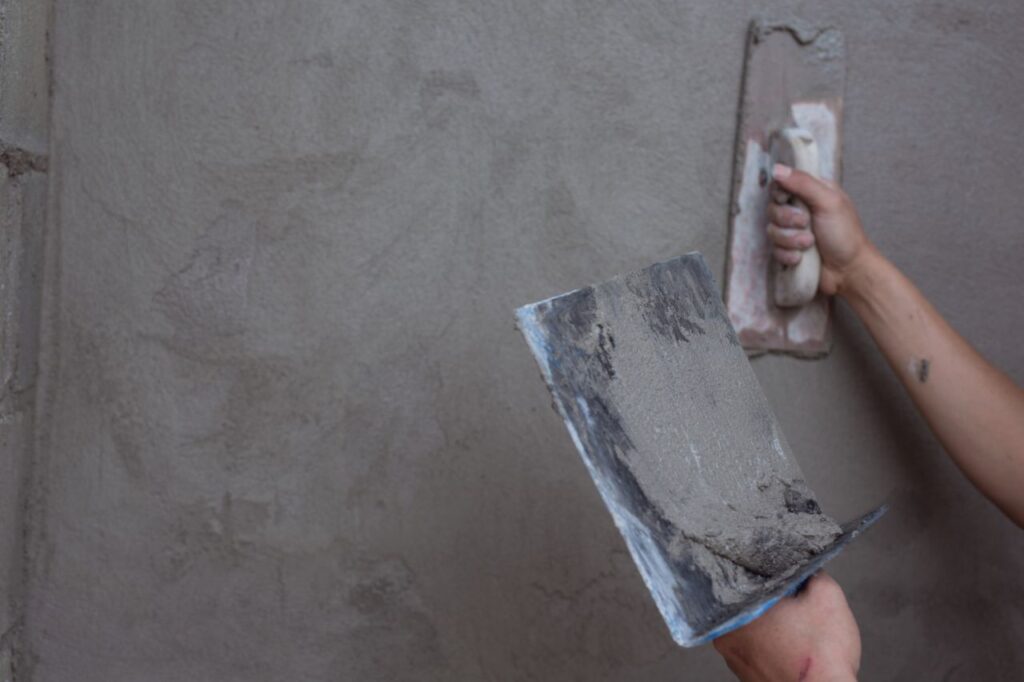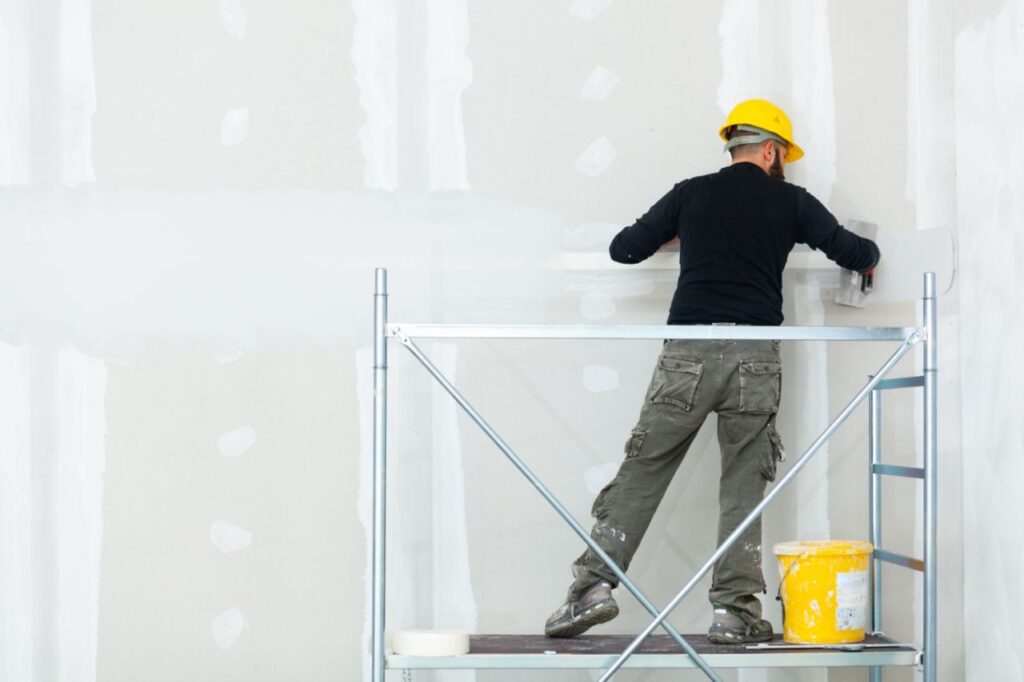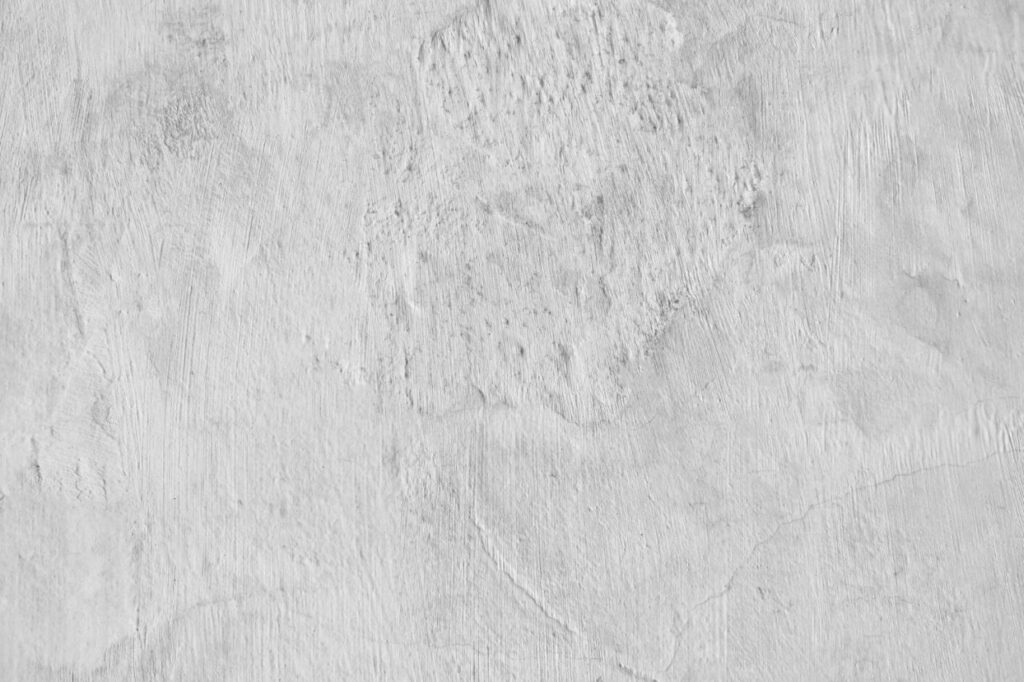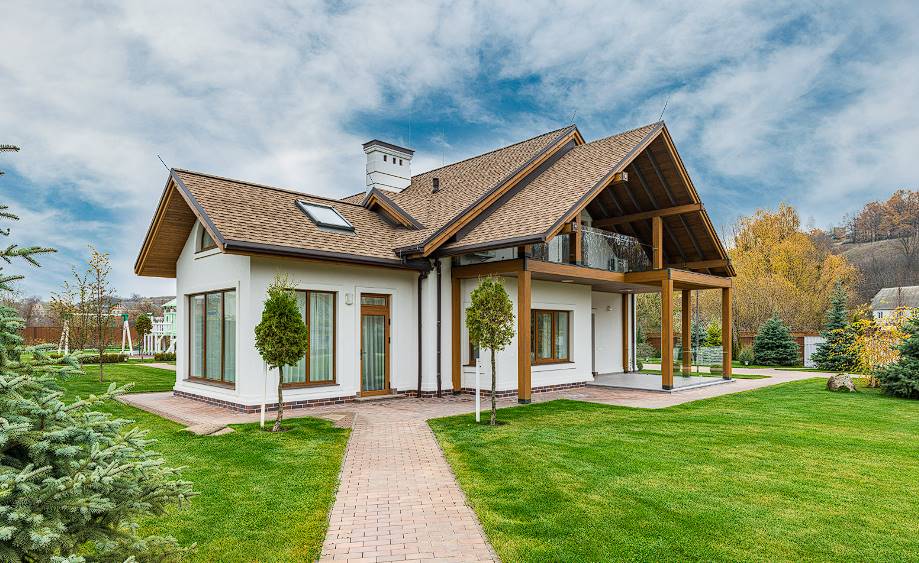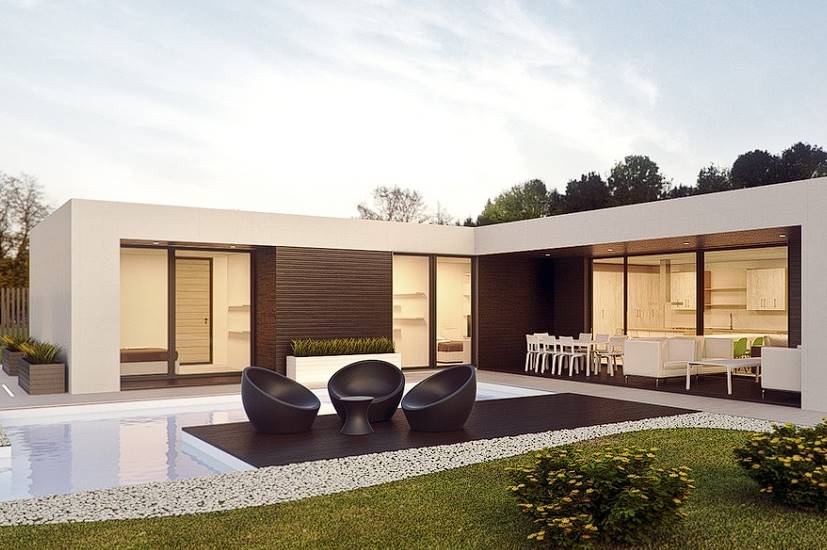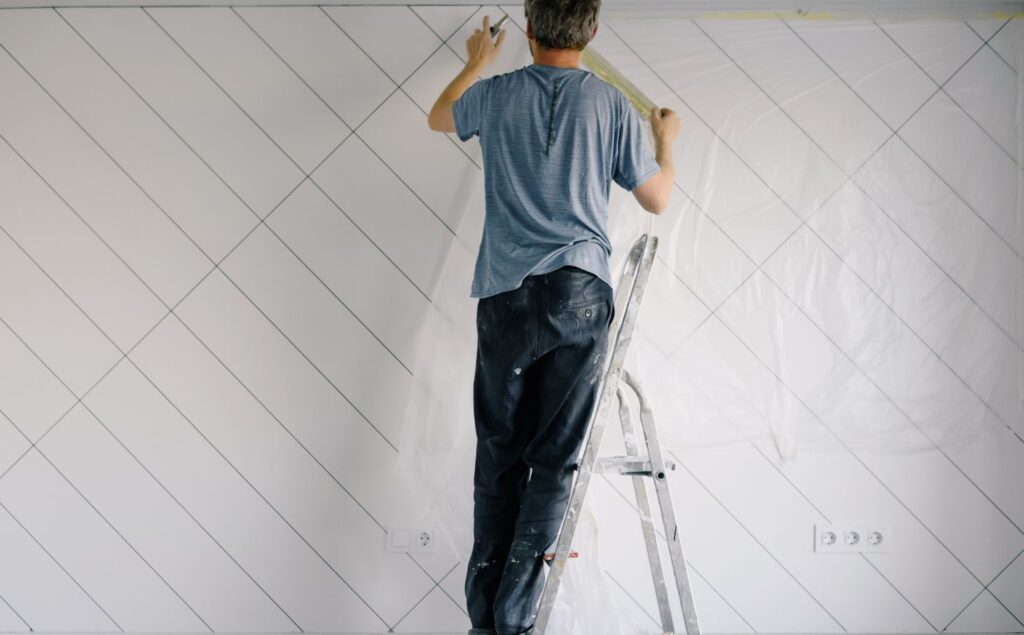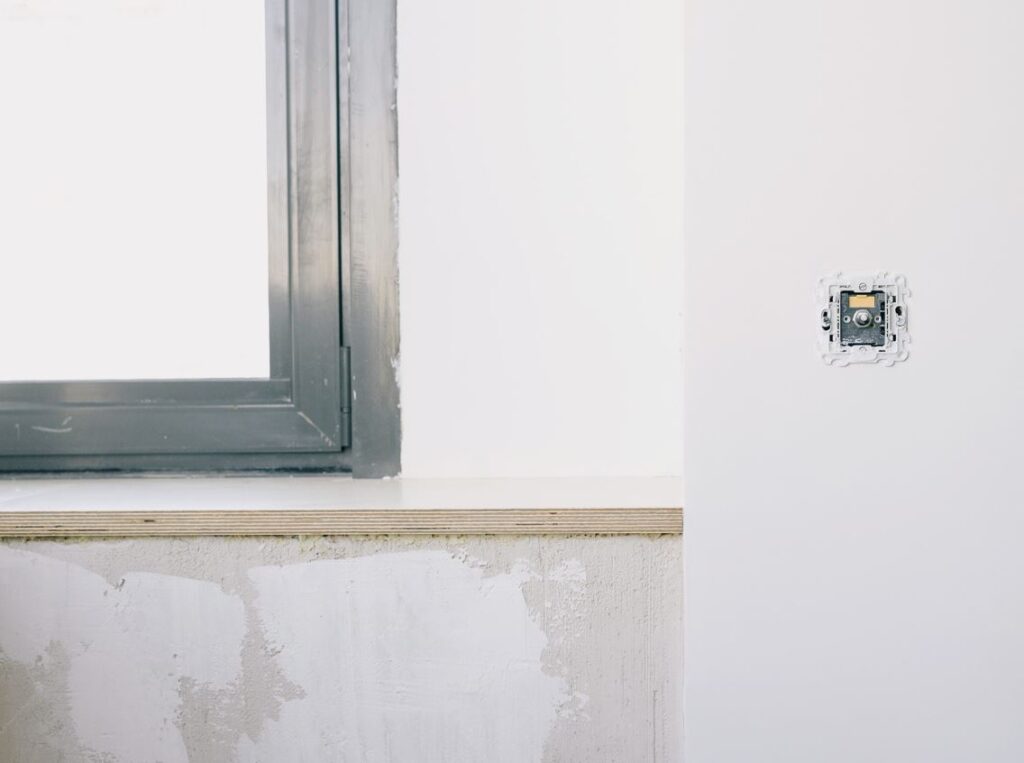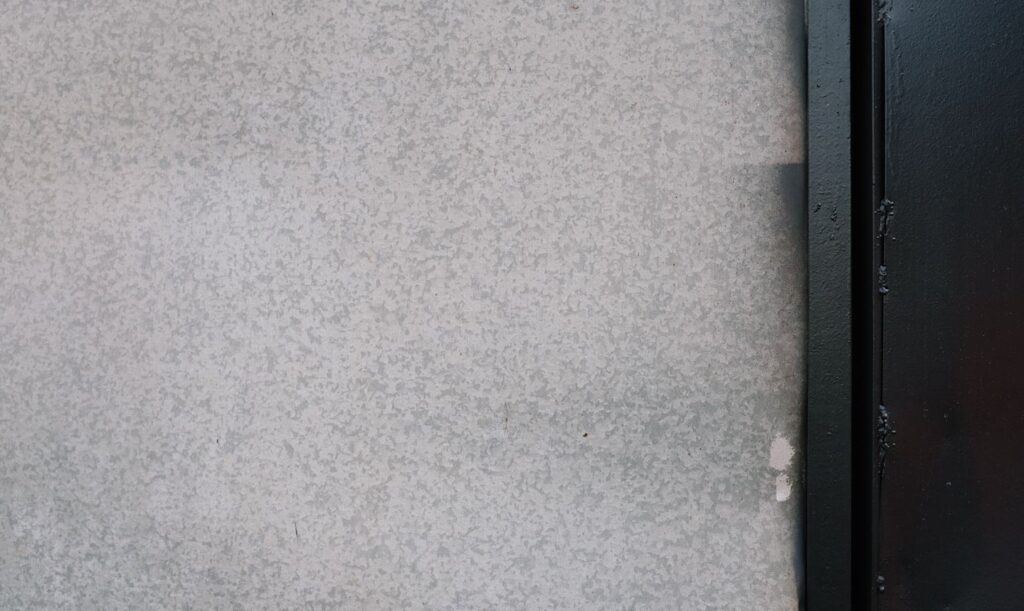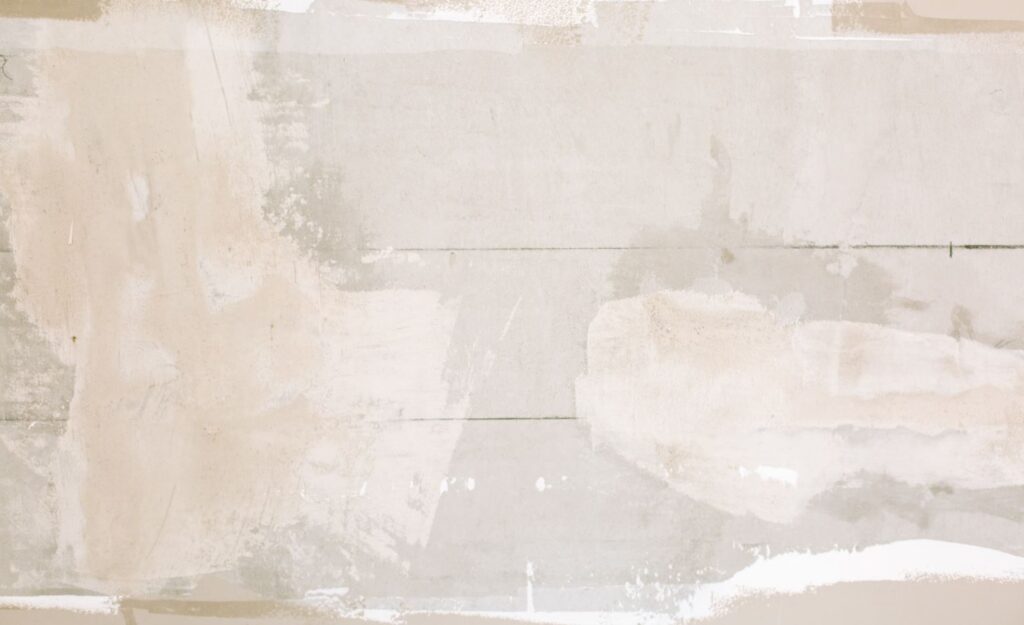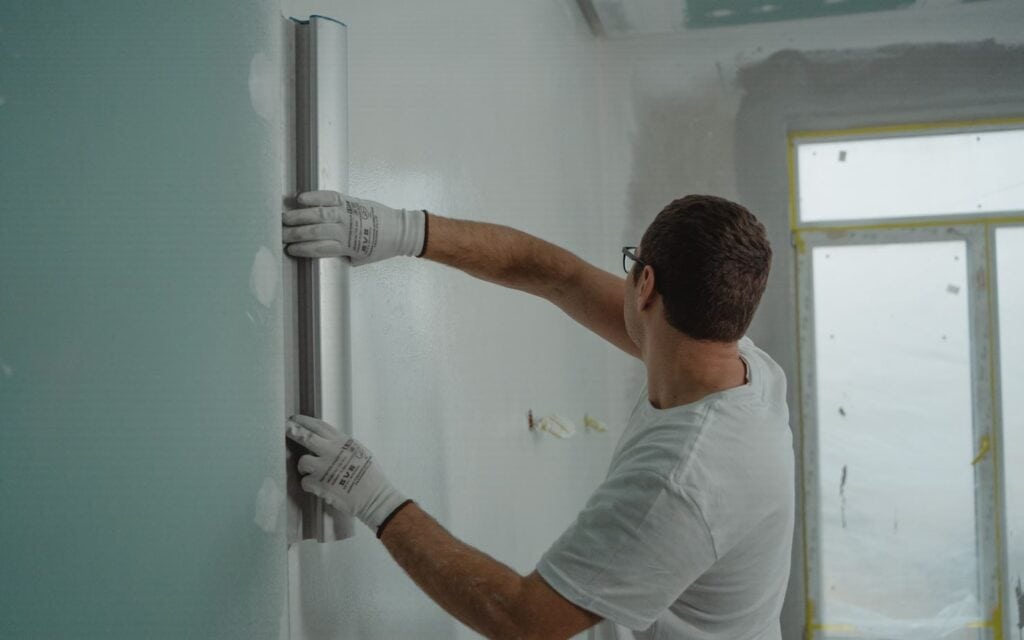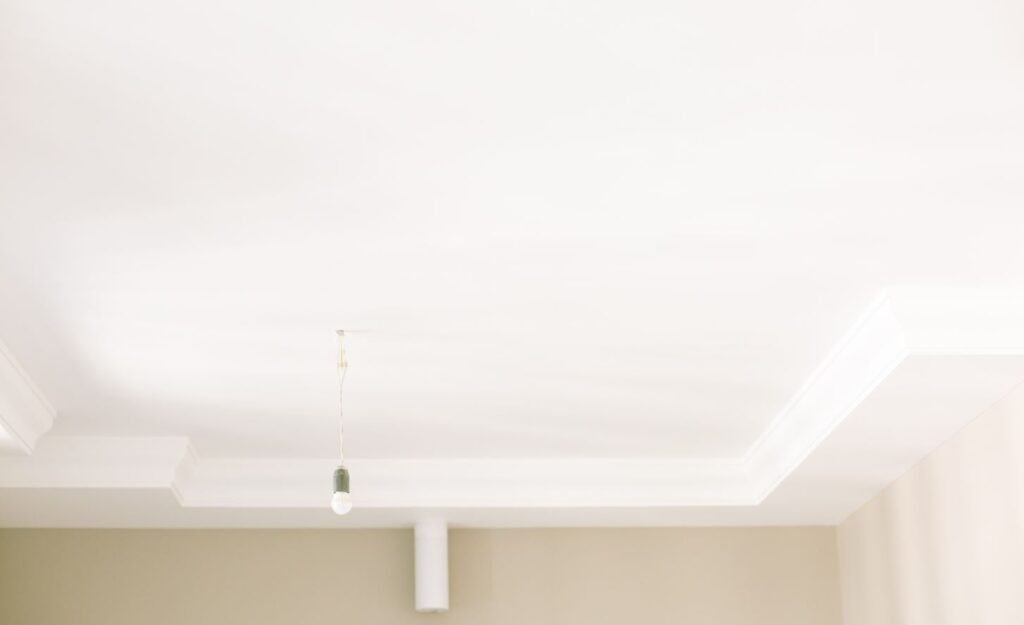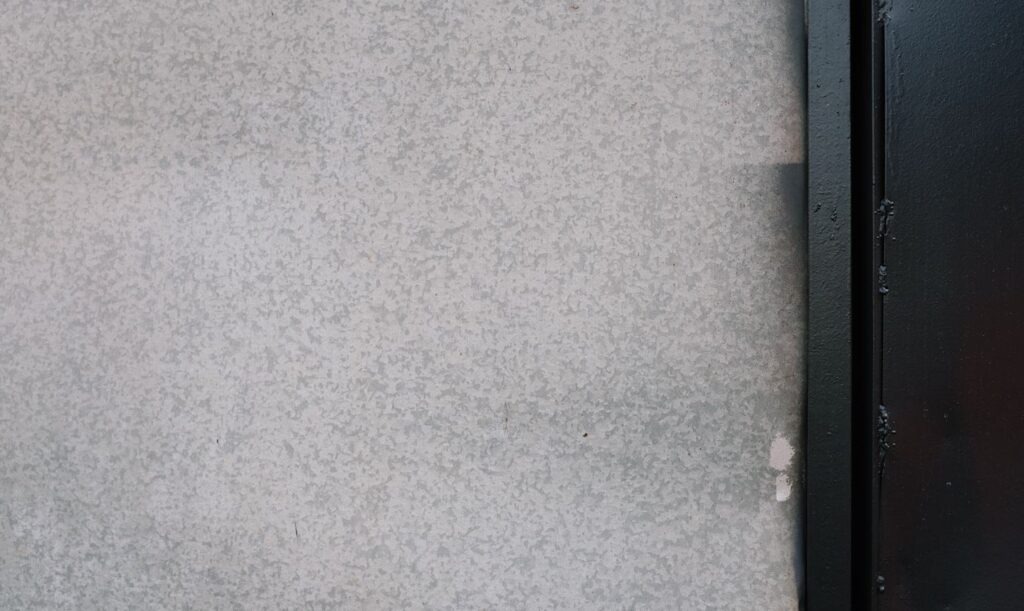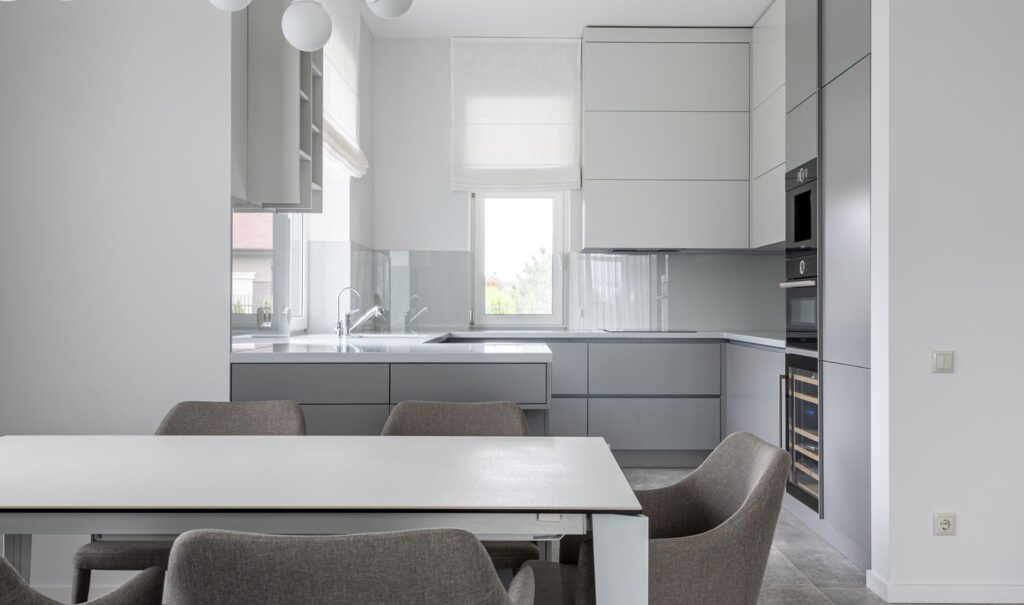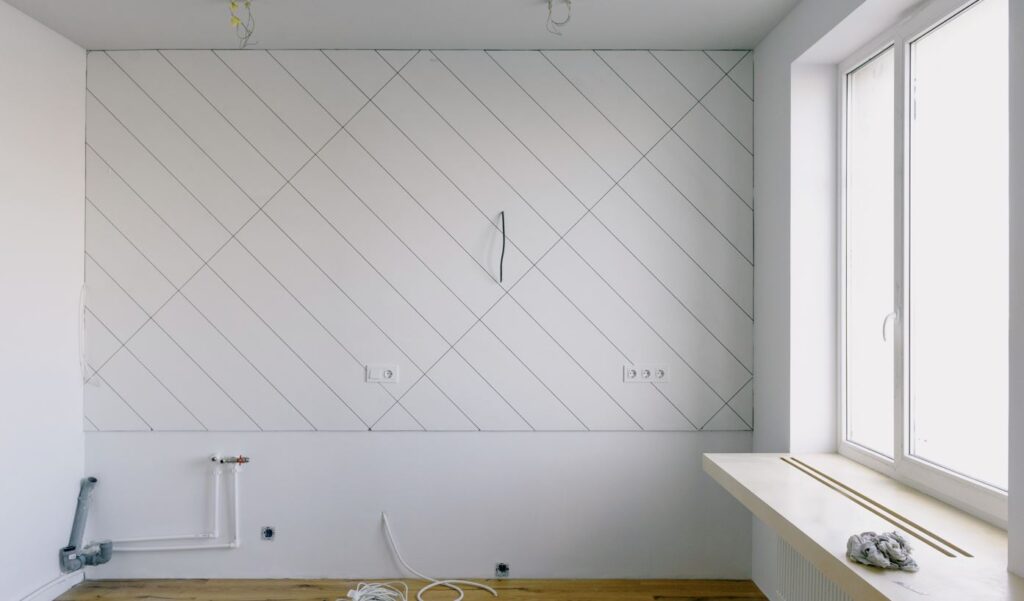Plastering has been used for centuries to improve the look of interior surfaces like walls and ceilings. But, in recent years, novel finishes have developed as creative ways to differentiate and personalise indoor environments.
These options are an alternative to conventional plastering methods and come in various colours, textures, and finishes to meet the needs of different interior design schemes.
Homeowners and decorators today have a wide variety of options, from smooth and contemporary concrete treatments to rustic and textured clay coatings. Natural lime plasters, decorative stucco, and polished Venetian plaster are a few of the other popular options due to their attractiveness and adaptability.
Walls and ceilings can be given a new lease on life with the help of intriguing opportunities presented by the world in alternative finishes, whether you're going for a modern style or something more traditional and artisanal. In this piece, we'll look at a few of these other coatings and discuss what makes them special.
The Value Of Plastering Finishes
Plastering finishes have consistently been important in building and decorating. They make for a nice, level surface that is easy to clean and conceals flaws. Traditional lime plaster was widely utilised before the advent of modern materials and techniques, which allowed for the development of new, more adaptable and artistic surface treatments.
Traditional Lime Plaster: Plastering Finishes' Foundation
Lime plaster has been used for hundreds of years and is still frequently used on older structures. Plaster that is both strong and porous can be formed by combining sand, water, and slaked lime. Because of its durability and resistance to weather and other environmental factors, lime plaster has been used for centuries and continues to look natural and rustic.
Cement Plaster: Durability And Strength
In the early 20th century, cement plaster became a practical substitute for lime plaster. The cement, sand, but instead water formula is more robust and long-lasting than the more conventional lime plaster. Cement plaster is widely employed in today's building industry because of its durability and longevity.
Gypsum Plaster: Nice And Simple To Use
Plaster of Paris, commonly known as gypsum plaster, rose to prominence due to its versatility and sleek appearance. The water is evaporated during the manufacturing process by heating the material gypsum. Gypsum plaster is widely favoured for use on interior walls and ceilings due to its fast setting time and simple application. It creates a flat, uniform surface ready to accept paint or other finishes.
Venetian Plaster: Classic Elegance
Although Venetian plaster originated in ancient Rome, it was not until the Renaissance that it became widely used in Venice. Layers of stone marble dust & lime plaster are applied to create this beautiful finish. The polished and glossy finish of Venetian plaster gives any space an air of sophistication. It may be stained to any colour and adds a luxurious feel to any room.
Textured Plaster Finishes: Adding Character And Depth
To give depth and character to their walls, more and more people are turning to textured plaster finishes. Stucco, skip trowel, and swirl patterns are just a few methods that can be used to create these looks. Textured plaster treatments not only add a distinctive creative flair to a space, but they also conceal flaws in the wall's finish and set the mood.
Modern Alternatives: Plastering Finishes Innovations
Plastering finishes have evolved in response to developments in technology and materials. Among these are polymer-modified plasters, resin coatings, and acrylic finishes. These contemporary substitutes provide more leeway in design, longevity, and adaptability. Because of their adaptability, they may be used to enhance the look of any surface, from concrete to wood to drywall.
Eco-Friendly And Sustainable Finishes
Sustainable and environmentally friendly plastering finishes are in high demand due to expanding public awareness of environmental issues. To lessen their ecological footprint, these coatings are made from renewable resources like clay and straw or recycled materials. Sustainable plaster finishes not just give a building a more organic look but also help keep the air cleaner.
Homeowners and architects now have far more options thanks to the development of plastering finishes. There is a wide variety of finishes, from age-old techniques like lime plaster to cutting-edge substitutes. Nowadays, there is a wide variety of solutions that allow you to alter your spaces according to your vision and style, whether you want a traditional and ageless appearance or a modern and cutting-edge design.
Plaster Finishes Types
Venetian Plaster
Plaster in the Venetian style is an ageless classic that can elevate any room to a new level of sophistication. This kind of plastering utilises several coats of marble dust and lime plaster, and it was developed in ancient Rome and refined in Venice, Italy. The finished product has a polished, marble-like smoothness.
The elegance and classic charm of Venetian plaster never goes out of style. The polished surface reflects the light, producing a subtle sheen & complementing the overall appearance, while the layers of plaster add richness and dimension to the walls. Plaster from the Veneto region can be coloured in many ways, opening us to design options.
Tadelakt
Tadelakt is a traditional Moroccan plastering plant famous for its exceptional beauty and longevity. Natural lime plaster is used in this method, and it is burnished with smooth rocks or pebbles. The procedure results in a one-of-a-kind feel and a plush, velvety finish.
Tadelakt's distinguishing feature is its waterproof qualities, which make it ideal for use in damp environments like bathrooms and hammams. Because of a chemical reaction, lime plaster is impervious to moisture and cannot be penetrated. Tadelakt's visual appeal and durability have made it a popular material for spa and high-end bathroom designs.
Concrete Finishes
These days, the raw & industrial look of concrete finishes is all the rage in modern interior design. Concrete surfaces can be finished in various ways to achieve different looks, from smooth to rough.
Because of its smooth but reflective surface, polished concrete gives off an air of sophistication. The beauty of stones and aggregates used in the concrete is brought out in an exposed aggregate finish, making for an interesting and tactile surface. Stamped or etched concrete finishes, for example, provide dimension and visual appeal.
Concrete coatings are not only aesthetically pleasing but also long-lasting and simple to maintain. Because of their versatility, they can be installed in various settings, from private residences to public businesses. Concrete surfaces are increasingly desired by individuals going for a hip, modern aesthetic.
Lime Wash
Limewash, a time-honoured and environmentally friendly finish, imparts a warm, homey feel to walls and other surfaces. Limewash, a coating made from slaked water and lime, helps walls to "breathe" or protects against moisture buildup. Its organic coating has been popular for ages due to its subtle, matte look.
Brick, stone, and plaster all benefit from having their inherent qualities brought out by a lime wash, which creates a lovely and textural finish. It is capable of being layered for depth, and it comes in a variety of earthy tones. Limewash adds a touch of history & authenticity to any room, making it a popular choice for farmhouse- and cottage-style decor and restoration projects on older structures.
Stucco
Stucco is an age-old method of decorating plaster walls. Cement, sand, & water combine to form a material suitable for use on both exterior as well as interior walls. Walls with a stucco finish have a rough and mottled appearance, making them more interesting.
Several results can be achieved using stucco in some different methods. It can be worked with a variety of tools to achieve a variety of finishes, from smooth to textured. Stucco is a popular exterior finish in Mediterranean, Spanish, and Mediterranean Southwestern architecture because of the feeling of history and continuity it conveys.
Polished Plaster
Polished plaster, sometimes called Venice polished plaster, is a modern option that blends age-old methods with cutting-edge technology. Many coats of glossy speciality plaster are applied and polished to get this effect. The finished product has a glossy sheen, much like polished stone.
Polished plaster provides a glossy, high-end look and comes in various tones and textures. It's versatile enough to be used anywhere, from private residences to public establishments, to impart contemporary elegance. Polished plaster is widely used in modern interior design because of the sparkle and sophistication it imparts to the space.
Textured Finishes
Adding visual and tactile appeal to walls and surfaces, textured treatments have grown in popularity in interior design. To achieve these looks, many processes and materials are used to create textured patterns or effects. Textured finishes, both subtle and strong, are a great way to change the atmosphere of a room.
Skip trowel, beach swirl, and knockdown textures are all examples of textural finishing methods. Several effects can be achieved with each method, giving the walls a sense of depth and space. These coatings are not only aesthetically pleasing but also functional, as they hide flaws and give a space its unique vibe.
Microcement
Microcement, often called micro-concrete and micro-screed, is an innovative and adaptable finish that has become increasingly used in contemporary architecture and interior design. Floors, walls, and furniture can all benefit from this mixture of cement, polymers, & fine particles. Microcement's sleek, uncluttered aesthetic works well with many different design motifs.
Microcement's ability to produce a seamless, joint-free surface is one of its most notable characteristics. This makes it look modern and sophisticated. Microcement's customizable hues and textures make it a versatile medium for artistic expression. Those drawn to modern and urban styles often choose it.
Frequently Asked Questions About Plastering
Alternative finishes can be highly durable, depending on the specific material and application. Some finishes, like stucco or concrete, offer excellent durability and withstand everyday wear and tear. However, the durability may vary, and it's important to choose a finish that suits your specific needs and consult with professionals for proper installation and maintenance guidelines.
Yes, many alternative finishes are suitable for wet areas like bathrooms. For example, Tadelakt is specifically designed to be waterproof, making it an ideal choice for showers and wet environments. However, it's important to check the finish specifications and ensure proper sealing and maintenance to prevent water damage and longevity.
The cost of alternative finishes can vary depending on the specific material, the complexity of the application, and regional factors. While some alternative finishes may have a higher upfront cost than traditional plastering, they often provide long-term value in durability, aesthetics, and uniqueness. Consider the overall benefits and value that the alternative finish brings to your project.
The application of alternative finishes can vary in complexity. Some finishes may be more DIY-friendly and can be applied by homeowners with the necessary skills and tools. However, for more intricate or specialised finishes, it's advisable to seek professional help. Professionals have the experience, expertise, and tools required to achieve optimal results and handle any challenges that may arise during the application process.
Yes, alternative finishes can be combined with traditional plastering techniques to create unique and personalised designs. Many interior designers and homeowners choose to blend different finishes for added visual interest and texture. By combining traditional plastering with alternative finishes, you can achieve a harmonious balance between classic elegance and modern creativity.
Clay Plaster
Compared to other plastering finishes, clay plaster (sometimes called earth plaster) is much more eco-friendly and long-lasting. Clay, sand, and organic fibres come together to create this. Using clay plaster gives a room a homey, earthy vibe that complements the surroundings beautifully.
Clay plaster's capacity to control moisture levels is particularly noteworthy. It can capture extra airborne moisture and then release it as the air dries out, facilitating a more favourable and healthier interior atmosphere. As a bonus, the soundproofing and noise reduction qualities of clay plaster are second to none.
Plaster made from clay can be placed on many different surfaces, including ceilings and walls, and then sealed with natural waxes to make them more durable and aesthetically pleasing. It has a rustic charm that will appeal to individuals who appreciate the elegance of natural materials and the importance of preserving the environment.
Metallic Finishes
Interiors with metallic finishes are instantly elevated in style. Metallic paint, leafing, & faux finishing are just some of the many options for this type of decoration. They can be applied to walls, furniture, and ornamental accessories to give them a shimmering quality that adds depth, light, and a sense of luxury.
When applied to a surface, the metallic sheen created by the paint's metallic particles is slight but noticeable. They are capable of being utilised to draw attention to specific parts of a building, to make a feature wall, or to give otherwise ordinary objects a luxurious sheen.
Metallic leafing is the process of using very thin sheets of metal, typically gold or silver, to create a luxurious appearance. Faux finishes, which provide the impression of real metals like copper or bronze without the hefty price tag, are becoming increasingly popular.
Wood Paneling
Wood panelling is an ageless and adaptable finish that can be used almost anywhere to add cosiness, texture, and a touch of the outdoors. Wooden panels and planks are attached to a wall, ceiling, or other surface. Shiplap, beadboard, and tongue-and-groove are just a few examples of the many wood panelling types available.
Wood panelling makes a room feel warmer and more welcoming because of its link to nature. It's visually interesting within the natural state and may be stained to match any aesthetic requirements. Wood panelling is a popular choice for various interior design aesthetics, from country and agricultural to ultra-modern and Scandinavian.
Faux Finishes
Using artificial methods, faux finishes can make artificial materials look like more expensive ones, like marble, granite, or wood. Using these coatings is a cheap approach to make your project look like it was made from high-end materials. Sponging, ragging, and glazing are just a few faux finishing techniques that may lend dimension and personality to walls and other flat surfaces.
Faux finishes allow you to take a boring wall and turn it into a work of art. Faux finishes provide limitless opportunities for artistic expression, whether you want the sophistication of marble, the warmth of wood grain, or the ruggedness of stone. They provide you with the freedom to express your individuality in the way your place looks and feels.
Decorative Wallpaper
Decorative wallpaper is just a creative and adaptable method of sprucing up boring walls with splashes of colour and pattern. The evolution of wallpaper has resulted in many options in design, texture, and style. Decorative wallpaper provides a limitless canvas for expression, from vivid prints to subtle textures & imitation finishes.
Decorative wallpaper is an effective way to draw attention to a prominent wall, give a room more dimension, or convey a particular feeling or concept. It's a simple and fast approach to decorating with art that can completely change the feel of a room. Because of technological improvements, many wallpapers have become easily removable and can be washed, rendering them an appealing choice for individuals who constantly update their decor.
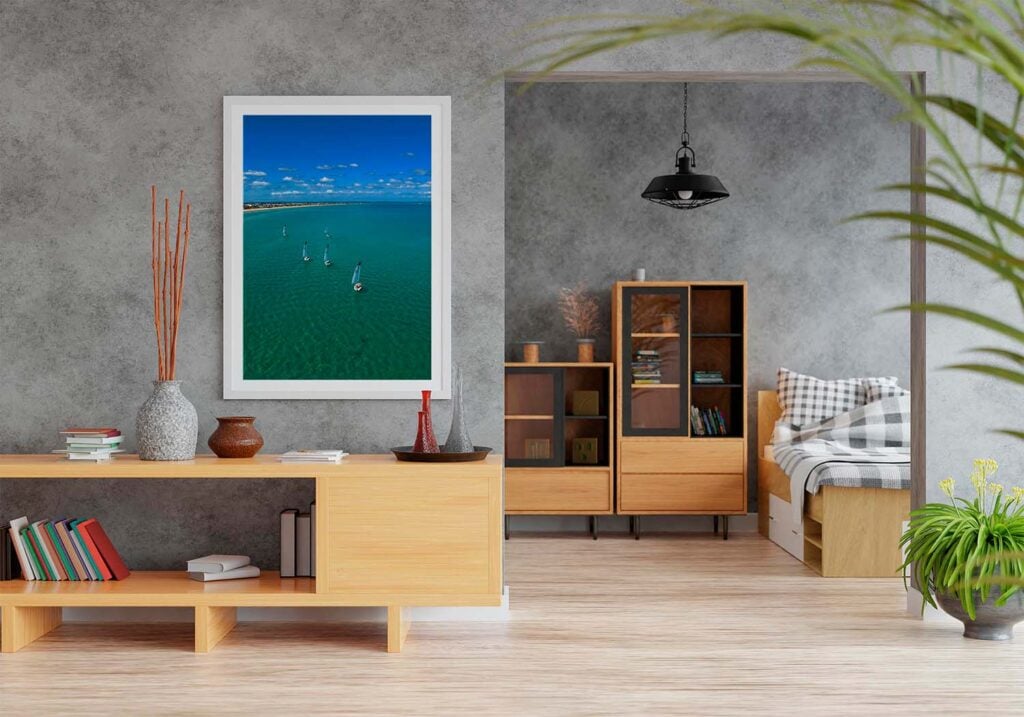
Selecting The Best Alternate Finish For Your Project
It's crucial to consider some elements while deciding on a different finish for your project. Your chosen finish should help you achieve your design objectives, complement the room's aesthetic, and serve your practical needs. To assist you in making a well-informed choice, please consider the following:
- Style and Ambiance: Think about the atmosphere and design aesthetic you hope to achieve. The several alternate finishes vary greatly in appearance and texture. If you want your space to have a homey, organic feel, materials like clay plaster or wood panelling could work well. Polished plaster with micro cement may be the best option if you're going for a contemporary, minimalist aesthetic.
- Durability and Maintenance: Compare the finishes you are considering regarding how long they will last and how much upkeep they need. Stucco and concrete are two examples of finishes that can take a beating and keep on looking good. Certain things can need a little TLC more often than others. Choose a surface treatment that works with your prefered level of upkeep and the amount of use the area will get.
- Application and Expertise: Consider how challenging it would be to implement the alternative coating. It may be necessary to hire a professional to install some finishes, while others are more do-it-yourself friendly. Take into account your existing knowledge and the tools at your disposal. Get expert assistance if you lack confidence or experience to increase your chances of approval.
- Compatibility with the Surface: First, you need to find out if an alternative finish can be applied to the surface you have in mind. Yet, alternative finishes are more adaptable and can be used on a wider variety of surfaces than concrete or drywall. Ensure the finish you pick won't affect the functionality or durability of the surface you're applying it on.
- Budget Considerations: Think about how much money you have to spend on your project. The price of several alternatives to standard finishes varies widely according to factors like the type of materials used and the difficulty of the required installation. Think about your financial situation rationally and investigate potential solutions. When calculating the return on investment of a potential finish, remember to factor in its longevity and value over time.
- Sample and Test: It's a good idea to get samples or run small-scale testing of potential alternative finishes before committing to one. You may evaluate the finish's texture, colour, and overall appearance in your room before it's ever installed. The results of tests might reveal whether or not the final product satisfies your requirements and realises your design intent.
Considering them will help you pick the best alternative finishing for your work. Carefully consider your needs and preferences, talk to experts if necessary, and select a finish that satisfies both.
Conclusion
Plastering has been used to enhance the look of interior walls and ceilings for millennia. Novel finishes have emerged in recent years as an innovative approach to setting apart and customising interiors. These choices are available in a wide range of hues, patterns, and surface treatments to accommodate a wide variety of aesthetic preferences. Whether they're looking for a modern, sleek concrete finish or a more rustic, textured clay coating, homeowners and decorators today have a lot of options to choose from. Some of the most well-liked choices are natural lime plasters, ornamental stucco, and polished Venetian plaster because of their aesthetic appeal and versatility.
Lime plaster is made by mixing sand, water, and slaked lime together to create a durable and porous plaster. It can withstand the elements and other forms of abuse for a long time. As an alternative to lime plaster, cement plaster is a practical choice due to being stronger and lasting longer. Gypsum plaster is frequently used due to its flat, homogeneous surface that is ready to take paint or other finishes and its ease of usage. Using a combination of stone dust from marble and lime plaster, traditional Venetian plaster has its roots in ancient Rome and exudes a timeless elegance. Plaster treatments with texture, like stucco, skip trowel, and swirl patterns, give walls personality and dimension.
Epoxy resin coatings, acrylic paint, and polymer-modified plasters are just a few of the contemporary alternatives to traditional plastering finishes. These modern replacements offer more flexibility in terms of design, durability, and adaptability, giving homeowners and architects more discretion in expressing their individuality via the renovation process.
A timeless classic, Venetian plaster adds a touch of elegance to every space. It's made with numerous layers of lime plaster and marble dust to look like polished marble. Tadelakt is a traditional Moroccan plastering plant known for its durability and aesthetic appeal. Limewash is an age-old and eco-friendly finish that gives walls and other surfaces a cosy, at-home vibe, and concrete treatments are all the rage in contemporary interior design because of their raw, industrial aspect. Stucco is a traditional plaster finishing technique that involves mixing cement, sand, and water to get a rough and mottled look.
Its historical and continuous qualities have made it a favourite in Mediterranean, Spanish, and Mediterranean Southwestern architecture. The glossy, high-end appearance of polished plaster, also known as Venetian polished plaster, is the result of a sophisticated approach that combines traditional techniques with cutting-edge technology. Walls and surfaces with textured finishes, such as skip trowel, beach swirl, and knockdown, are more interesting to look at and touch, creating the illusion of more depth and space. Microcement, sometimes called micro-concrete and micro-screed, is a versatile and modern finish widely utilised in buildings and interiors today.
Clay plaster, often called earth plaster, is a durable and sustainable coating that imparts a warm, rustic feel to any space. Its soundproofing and noise reduction properties, as well as its ability to regulate humidity, are particularly impressive. Metallic paint, leafing, and faux finishing bring opulence and sophistication to interiors by reflecting light and creating a three-dimensional effect. Wood panelling is a classic and versatile finishing material that brings warmth, texture, and a natural element indoors. Using faux finishes is a cost-effective way to make a product look as though it was constructed from high-end materials without really using those materials.
Decorative wallpaper is an innovative and flexible option for injecting life into otherwise dull walls via the use of colour and pattern. It's a great option for folks who are always switching up their decor because it offers a blank slate on which to create something new, and because it's simple to remove and clean.
Think about how the alternative finish would affect the project's overall aesthetic, ambience, durability, and upkeep when making your final decision. Stucco and concrete are two materials that can tolerate abuse while still looking good. The best finish for your project is the one that meets your demands and tastes. Take into account the difficulties of installation and the potential need for professional assistance when contemplating alternative coatings and their application. Check to see if the surface's usefulness and durability will be affected by the finish.
Establish a spending limit after thinking about the cost of supplies, the complexity of the installation, and the expected return. It is important to analyse the feel, colour, and overall look of potential finishes using samples before committing to a final product. Choose a finish that suits your demands and tastes, with the help of professionals if necessary.
Content Summary
- Alternative finishes to traditional plastering offer creative ways to personalise interior surfaces.
- These finishes come in various colours, textures, and finishes to suit different design schemes.
- Natural lime plasters, decorative stucco, and polished Venetian plaster are popular alternatives.
- These finishes can breathe new life into walls and ceilings, whether aiming for a modern or traditional look.
- Traditional lime plaster has been widely used for its durability and rustic appearance.
- Cement plaster emerged as a practical substitute in the early 20th century due to its strength and longevity.
- Gypsum plaster, also known as plaster of Paris, is easy to use and creates a flat, smooth surface.
- Venetian plaster, originating from ancient Rome, offers a polished and luxurious finish.
- Textured plaster finishes, such as stucco, add depth and character to walls while hiding flaws.
- Polymer-modified plasters, resin coatings, and acrylic finishes provide more design options and durability.
- Sustainable and environmentally friendly plastering finishes are in high demand.
- Venetian plaster creates a timeless and sophisticated look.
- Tadelakt, a Moroccan plastering technique, offers exceptional beauty and waterproof qualities.
- Concrete finishes provide a raw and industrial aesthetic, from smooth to rough.
- Lime wash gives walls a warm and matte appearance, popular for its organic look.
- Stucco is a traditional method of decorating walls, known for its rough and mottled finish.
- Polished plaster provides a glossy and high-end appearance, suitable for modern interior design.
- Textured finishes add visual and tactile appeal, giving walls depth and character.
- Microcement offers a seamless and joint-free surface with a sleek, contemporary aesthetic.
- Clay plaster is eco-friendly, long-lasting, and regulates moisture levels.
- Metallic finishes instantly elevate the style of interiors with a shimmering quality.
- Wood panelling adds cosiness, texture, and a touch of nature to any space.
- Faux finishes create the appearance of expensive materials like marble, granite, or wood.
- Decorative wallpaper is a creative way to add colour and pattern to walls.
- Consider the desired atmosphere and design aesthetic when choosing an alternative finish.
- Durability and maintenance should be taken into account for each finish.
- Evaluate the difficulty of the application and consider professional assistance if needed.
- Ensure the alternative finish is compatible with the surface it will be applied to.
- Consider the budget and the long-term value of the chosen finish.
- Test samples or run small-scale tests before committing to a finish.
- Venetian plaster is an ageless classic that adds sophistication to any room.
- Tadelakt offers exceptional beauty and waterproof qualities, ideal for damp environments.
- Concrete finishes provide a raw and industrial look, ranging from smooth to rough surfaces.
- Lime wash gives walls a warm and organic appearance with a matte finish.
- Stucco creates a rough and mottled finish, adding interest to walls.
- Polished plaster provides a glossy and high-end appearance, suitable for modern interiors.
- Textured finishes add depth and character to walls, hiding flaws and setting the mood.
- Microcement offers a seamless and joint-free surface, ideal for contemporary designs.
- Clay plaster is eco-friendly, regulates moisture levels, and has excellent soundproofing qualities.
- Metallic finishes add a sense of luxury, depth, and light to interiors.
- Wood panelling adds cosiness, texture, and a connection to nature.
- Faux finishes can create the appearance of expensive materials at a lower cost.
- Decorative wallpaper provides endless design possibilities with various prints and textures.
- Consider the desired atmosphere and design aesthetic when choosing an alternative finish.
- Durability and maintenance requirements should align with the intended use of the space.
- Evaluate the level of expertise required for application and consider professional assistance if needed.
- Ensure the alternative finish is compatible with the surface and won't compromise its functionality.
- Consider the budget and the long-term value of the chosen finish.
- Test samples or conduct small-scale tests to assess the finish's suitability for the project.
- Carefully consider needs, and preferences, and seek expert advice to select the best alternative finish.

